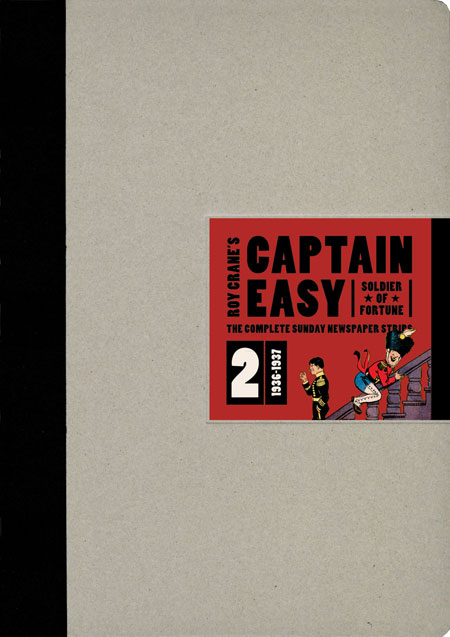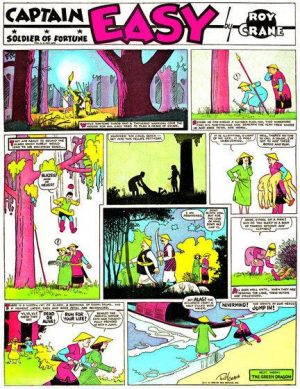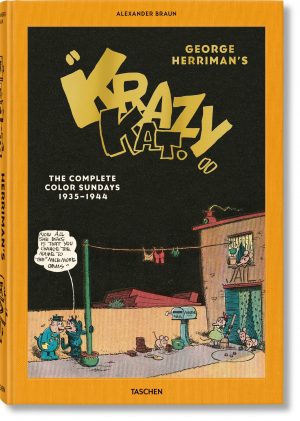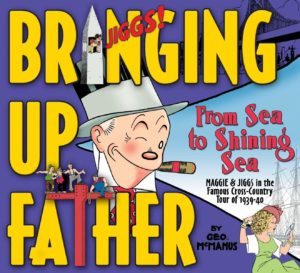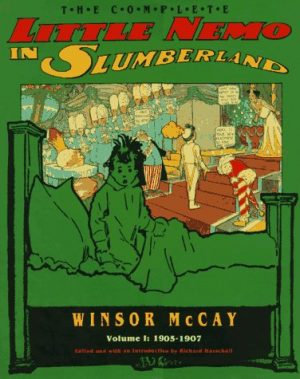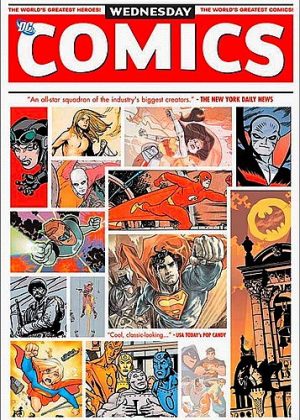Review by Win Wiacek
As seen in Captain Easy 1, the title adventurer debuted on 30th July 1933, in madcap, two-fisted exploits and went on to influence the foremost newspaper strips of the next generation.
We open with a foreword from historian, archival publisher and critic Rick Norwood, ‘Stealing Color From Black and White’, a fascinating extended introduction by award-winning cartoonist Paul Pope and ‘Three Strip Monte ’– a brief history of Crane’s career gambles by legendary strip historian Bill Blackbeard. However, this second volume (of four) really begins with ‘Gold of the Frozen North’ as the dour, sour soldier of fortune reaches the chilly snow-swept mining boom-town of Bugaboo.
Exhausted after his part in the war between Nikkateena and Woopsydasia all Easy wants is a meal and a bed, but his innate chivalry defending a bar-girl’s honour soon has him on the run from Nikky Eskota, the savage gang boss who runs the town. Easy then compounds the error by helping beautiful Gizzy escape the brute’s amorous attentions before escorting her down the frozen river to trade her fathers’ diamonds.
The resulting spectacular icy wilderness adventure ran from 8th December 1935 to 19th April 1936, after which ‘The Hook-Nosed Bandit’ (4th April -8th August 1936) finds the footloose paladin heading to the trouble-soaked nation of Hitaxia where his penchant for trouble soon brands him a wanted criminal fugitive and lands him in the midst of a civil war. As usual, a pretty girl is the immediate cause of his many woes and the method of his eventual escape, along with unconventional millionaire inventor Mr. Belfry.
Variety is key to exotic adventures of the laconic Southern Gentleman as Crane combines jokes, thrills and wild twists week after glorious week. He’s lost at sea, runs into old pal Wash Tubbs, and meets millionaires in disguise. Amid plenty more excitement, you understand.
These pages were a clearly as much of joy to create as to read. In fact, the cited reason for Crane surrendering the Sunday strip to his assistant Leslie Turner in 1937 was NEA Syndicate’s abrupt demand that all its strips be henceforward produced in a rigid panel-structure to facilitate them being cut up and re-pasted as local editors dictated. You can actually see the day that happened in this volume.
Whilst the basic drawing of Crane and Turner is practically indistinguishable, the moment when the layout and composition were shackled stands out like a painful sore thumb. Crane just walked away from his playground, concentrating on the daily feature, until in 1943 with contract expired, he left NEA to create the aviation adventure strip Buz Sawyer.
In this selection, Crane’s irrepressible humour comes perfectly into focus and this enchanting serial abounds with breezy light-hearted banter, hilarious situations and outright farce – a sure-fire formula modern cinema directors still plunder to this day.
This is storytelling of impeccable quality: unforgettable, spectacular and utterly irresistible, and Volume 3 picks up with 1938.
